I have a dataframe that provides two integer columns with the Year and Week of the year:
import pandas as pd
import numpy as np
L1 = [43,44,51,2,5,12]
L2 = [2016,2016,2016,2017,2017,2017]
df = pd.DataFrame({"Week":L1,"Year":L2})
df
Out[72]:
Week Year
0 43 2016
1 44 2016
2 51 2016
3 2 2017
4 5 2017
5 12 2017
I need to create a datetime-object from these two numbers.
I tried this, but it throws an error:
df["DT"] = df.apply(lambda x: np.datetime64(x.Year,'Y') + np.timedelta64(x.Week,'W'),axis=1)
Then I tried this, it works but gives the wrong result, that is it ignores the week completely:
df["S"] = df.Week.astype(str)+'-'+df.Year.astype(str)
df["DT"] = df["S"].apply(lambda x: pd.to_datetime(x,format='%W-%Y'))
df
Out[74]:
Week Year S DT
0 43 2016 43-2016 2016-01-01
1 44 2016 44-2016 2016-01-01
2 51 2016 51-2016 2016-01-01
3 2 2017 2-2017 2017-01-01
4 5 2017 5-2017 2017-01-01
5 12 2017 12-2017 2017-01-01
I'm really getting lost between Python's datetime, Numpy's datetime64, and pandas Timestamp, can you tell me how it's done correctly?
I'm using Python 3, if that is relevant in any way.
EDIT:
Starting with Python 3.8 the problem is easily solved with a newly introduced method on datetime.date objects: https://docs.python.org/3/library/datetime.html#datetime.date.fromisocalendar
